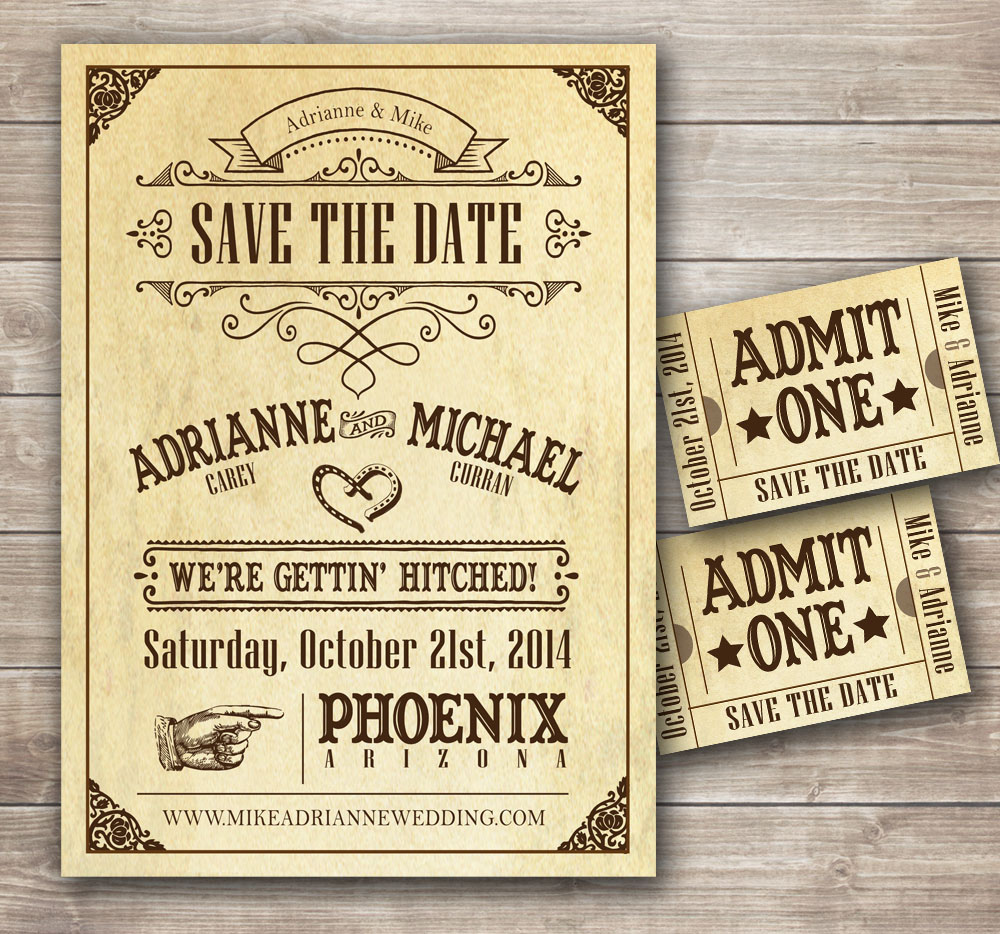
Curran, A. (2013). Country Western Wedding Invitation. Retrieved 03/02/17 from
https://www.flickr.com/photos/cottontaildigitalpress/10845029414
Invitations are important because you live in a society where everybody interacts socially with people. There are always some social events such as birthdays, weddings, barbecues, sport or musical events; or you want to go to movies, plays, and restaurants. Most of the time you will want to go with your friends. Therefore, you need invitations.
You can make, accept or decline invitations. They can be formal or informal.
The content of this section is:
• An introduction to the topic.
• A presentation of common expressions for making, accepting and declining invitations, formally and informally.
• Activities to practice the four skills in language learning.
a) Writing
b) Reading
c) Listening
d) Speaking
In the end, you will find a self-assessment exercise.
By the end of this section, you will structure sentences using phrases such as would, would love to and can’t, among others, to formulate, accept or decline invitations.
People have, in daily life, social situations such as birthdays, graduations or wedding parties. Sometimes you want to go to some events such as musical concerts, sports matches, movies or only go to a restaurant or bar.
Most of the time, you and people don’t want to be alone at these activities. Therefore, you make or receive invitations.
When you give somebody an invitation, you ask if he would like to go somewhere, do something or have something.
There are two ways of answering: he accepts the invitation, or he declines the request.
Invitations can be divided into formal and informal. In the next chart, there are some common expressions to make, accept or decline invitations, in formal or informal situations.

Can you differentiate expressions for making, accepting, or declining invitations?
Instructions. Drag the correct option to complete the sentences. If the expression is not right, it will return to its place of origin. You have just one opportunity.
In this activity, you have some invitations that have different responses, only one is correct. Can you find it?
Choose the right answer, once you have answered all of them, press check, to see your score.
Activity 1
Think about the answers to these questions:
How are the birthday parties celebrated?
Do you like to go to birthday parties?
In your family, is it common to celebrate birthday parties? Are there sad birthday parties?
Why a party can be sad?
In this activity, you will read a text about a poor girl who doesn’t have friends and her parents make a party for her. Although it is a sad event, suddenly something beautiful happens.
Now read the text carefully.
Activity 2
In this activity, you will listen to Joe inviting Monica to a social event.
Listen to the conversation

Then choose the correct option for the following statements.
At the end of the activity, you can check your score.
Activity 3
Now read the following chart, with it you will let you:
Activity 4
For this activity, you will have three situations.
Choose only one option of each group and make, accept or decline the invitation, Give reasons for your decision. Follow the example:

Record yourself for one or two minutes and use the following rubrics to:
Know what you need to consider during your speaking activity and get your score.
Now choose only one option of each group and make, accept or decline the invitation, Give reasons for your decision.
Read this telephone conversation. A girl named Pam invites Joe to her house; he is doing something at home. Does he accept? why?
• Fuscoe K. (2010). Attitude Student’s Book 1. MacMillan. Mexico. DF.
• McCarthy M (2005). Touchstone 1. Cambridge University Press. New Your USA.
• Raskin J. (2010). Future English for results 2. Pearson Longman. New Your USA.
• Richards J. (2006). Interchange 1. Cambridge University Press. New Your USA.
• Saslow J. (2011). Top Notch 1. Pearson Longman. New Your USA.
• Soars L. (2003). American Headway 3. Oxford University Press. New Your USA.
• Soars L. (2009). American Headway 1.Oxford University Press. New Your USA.